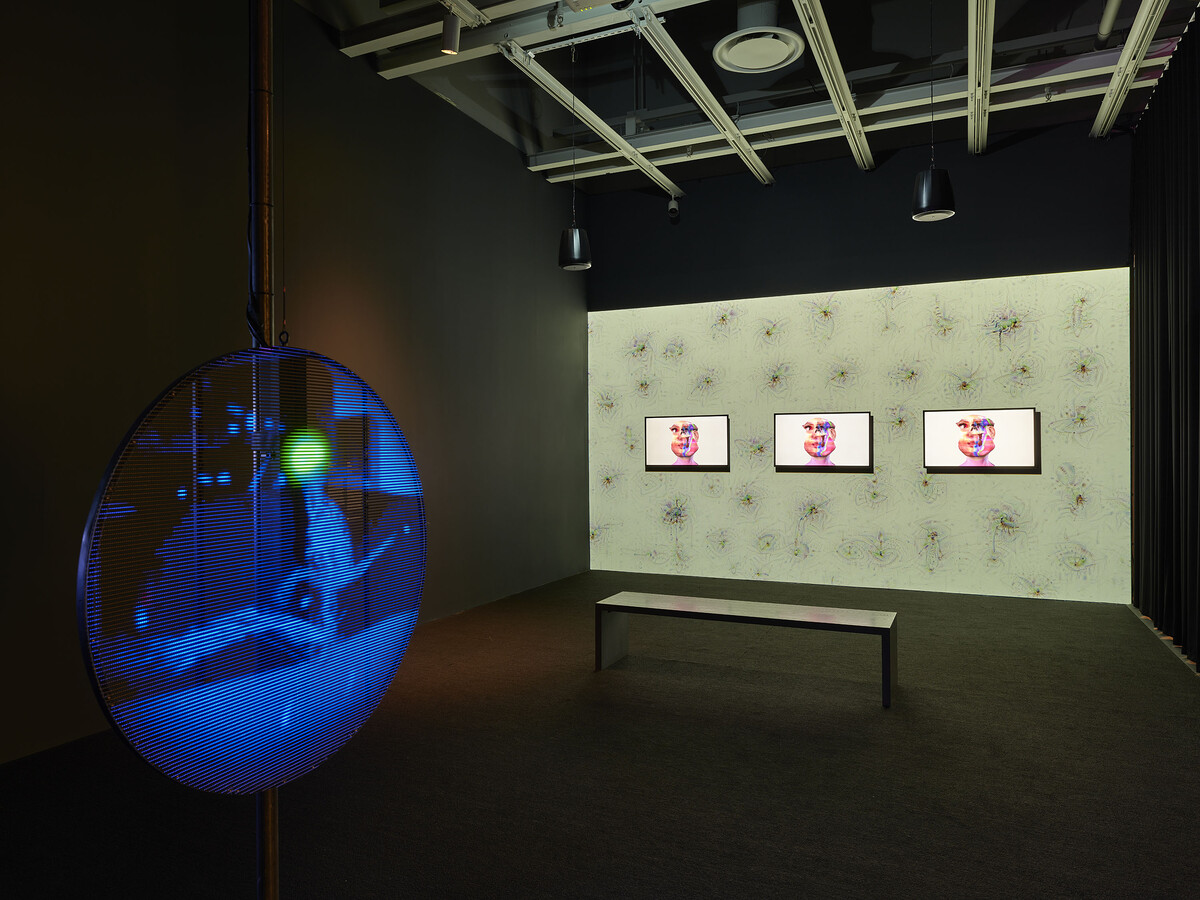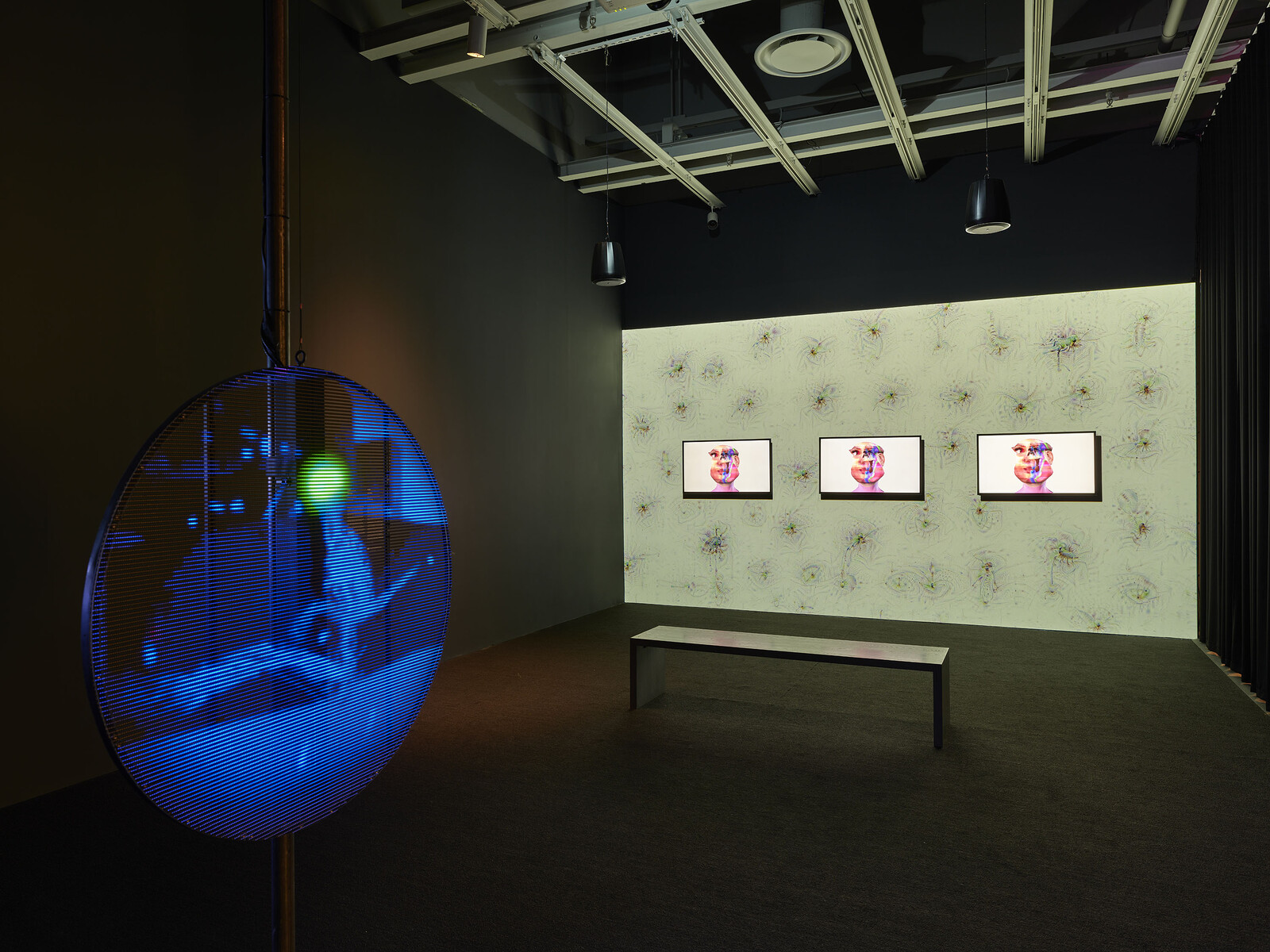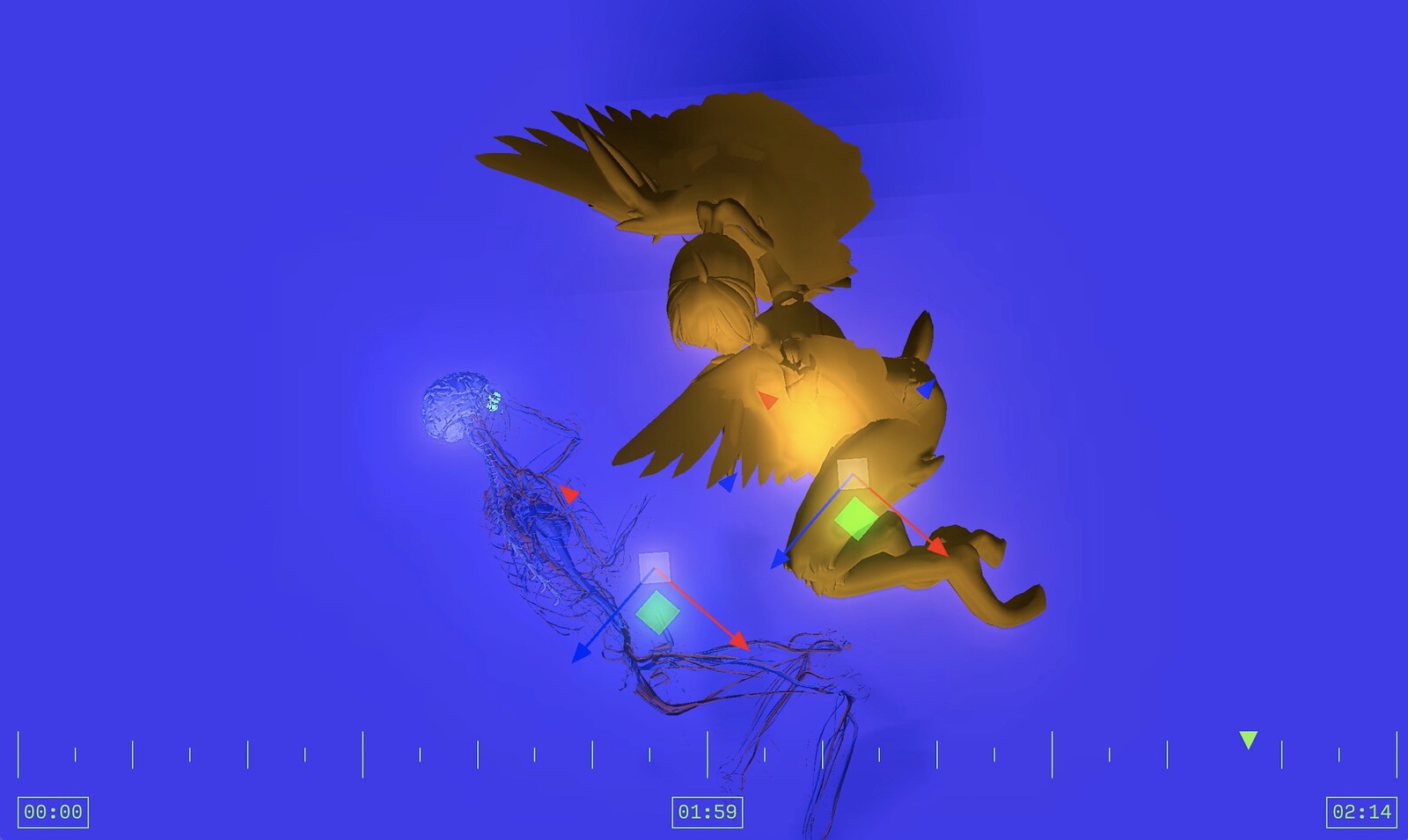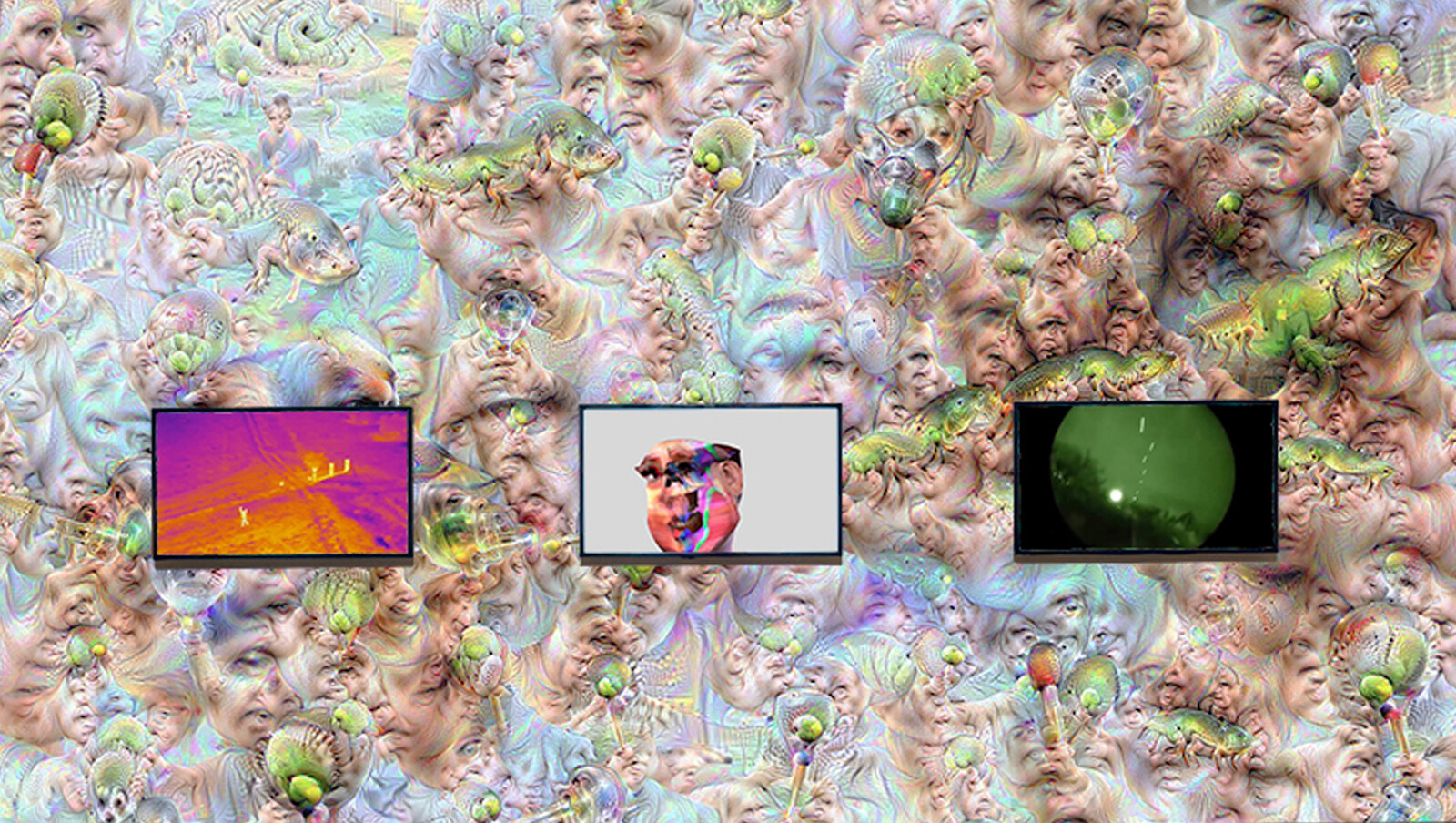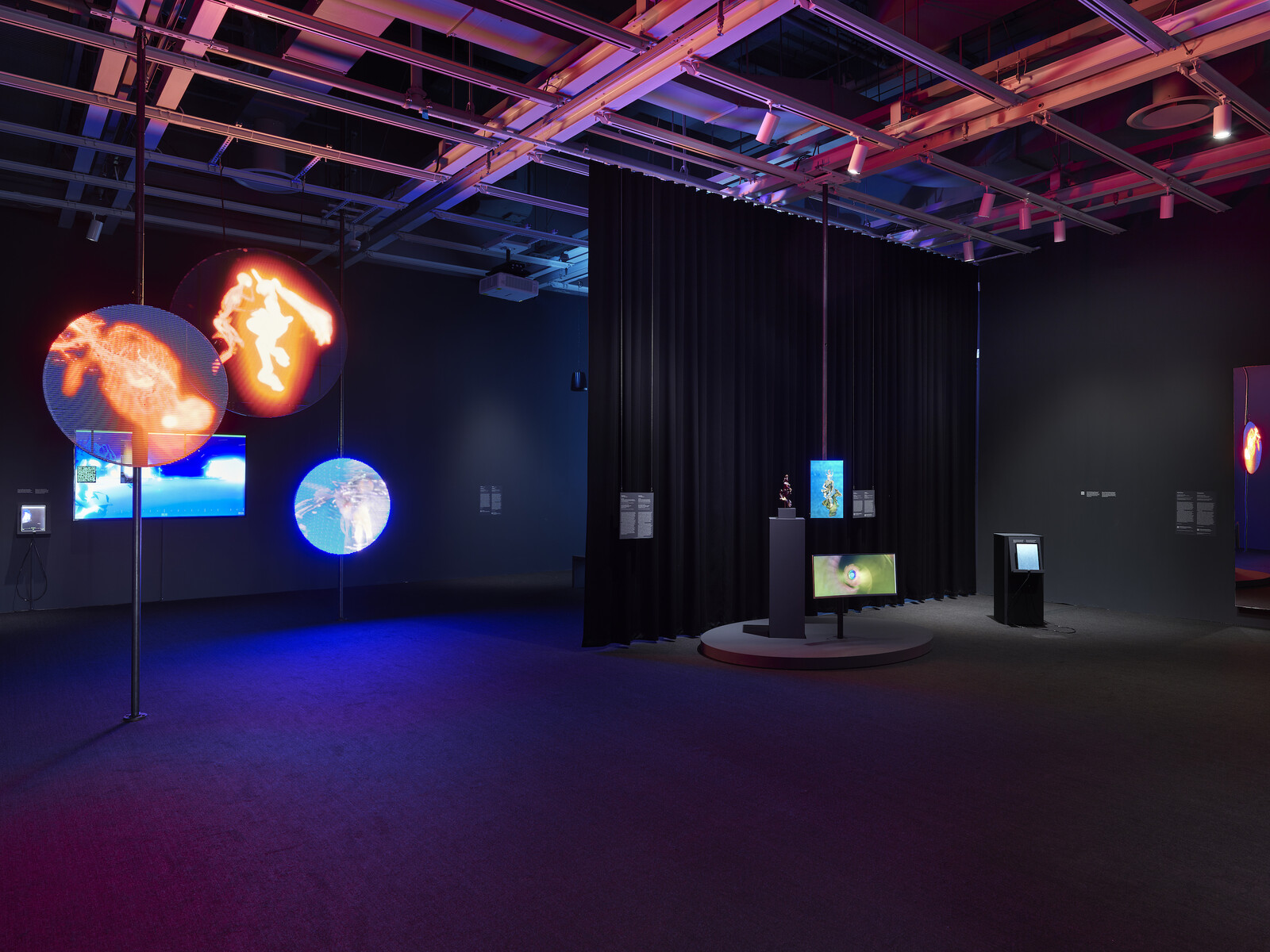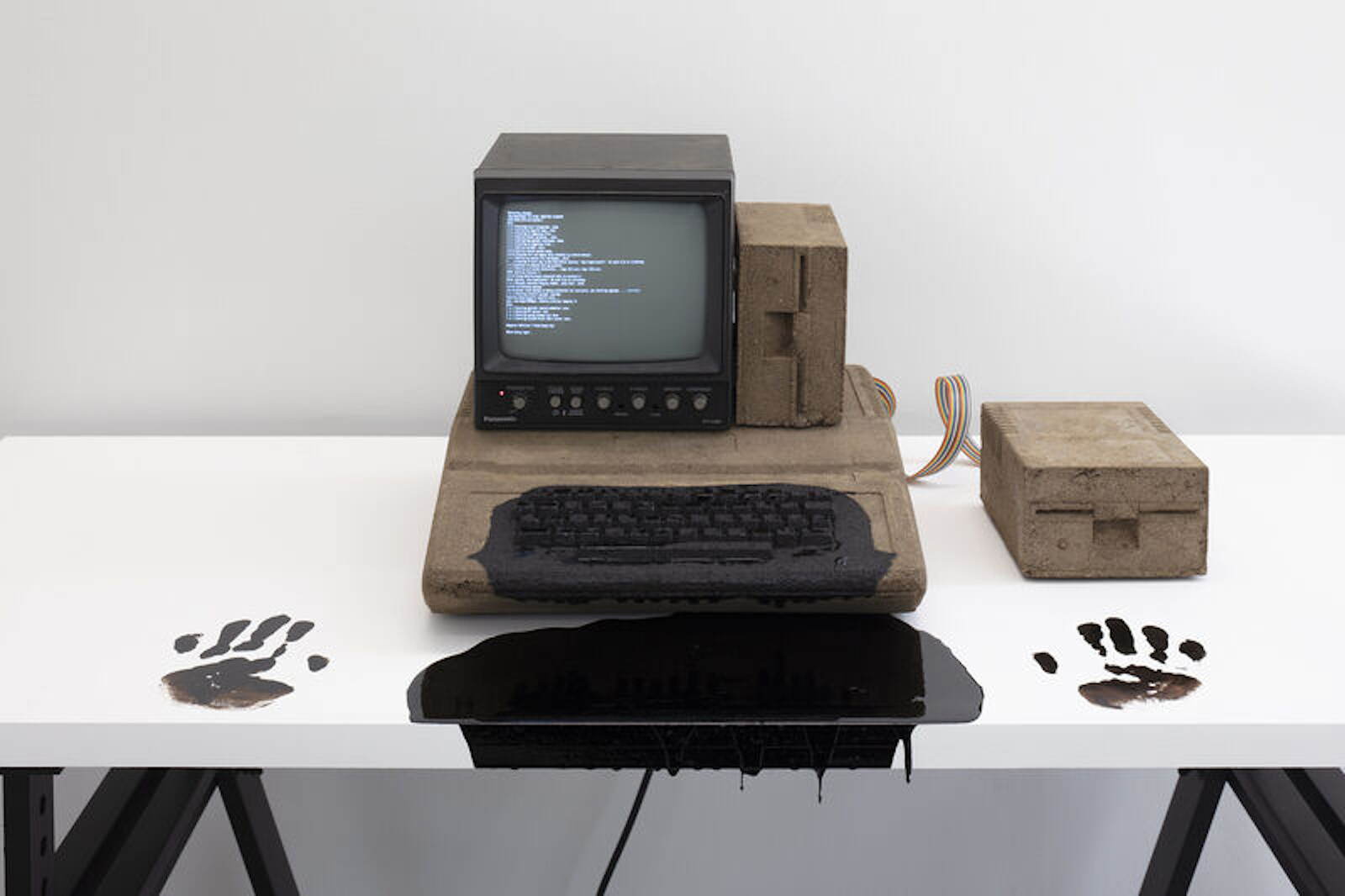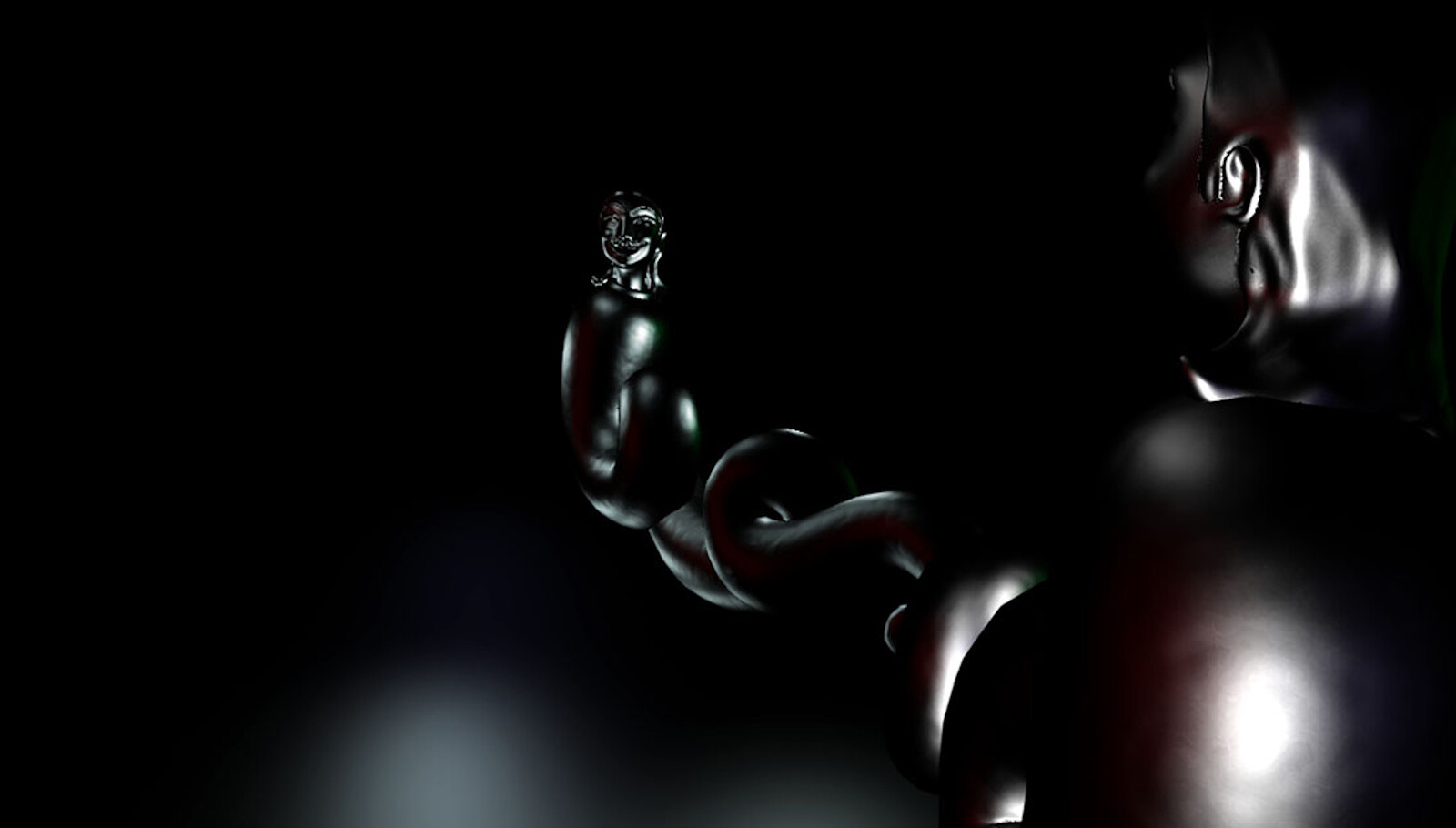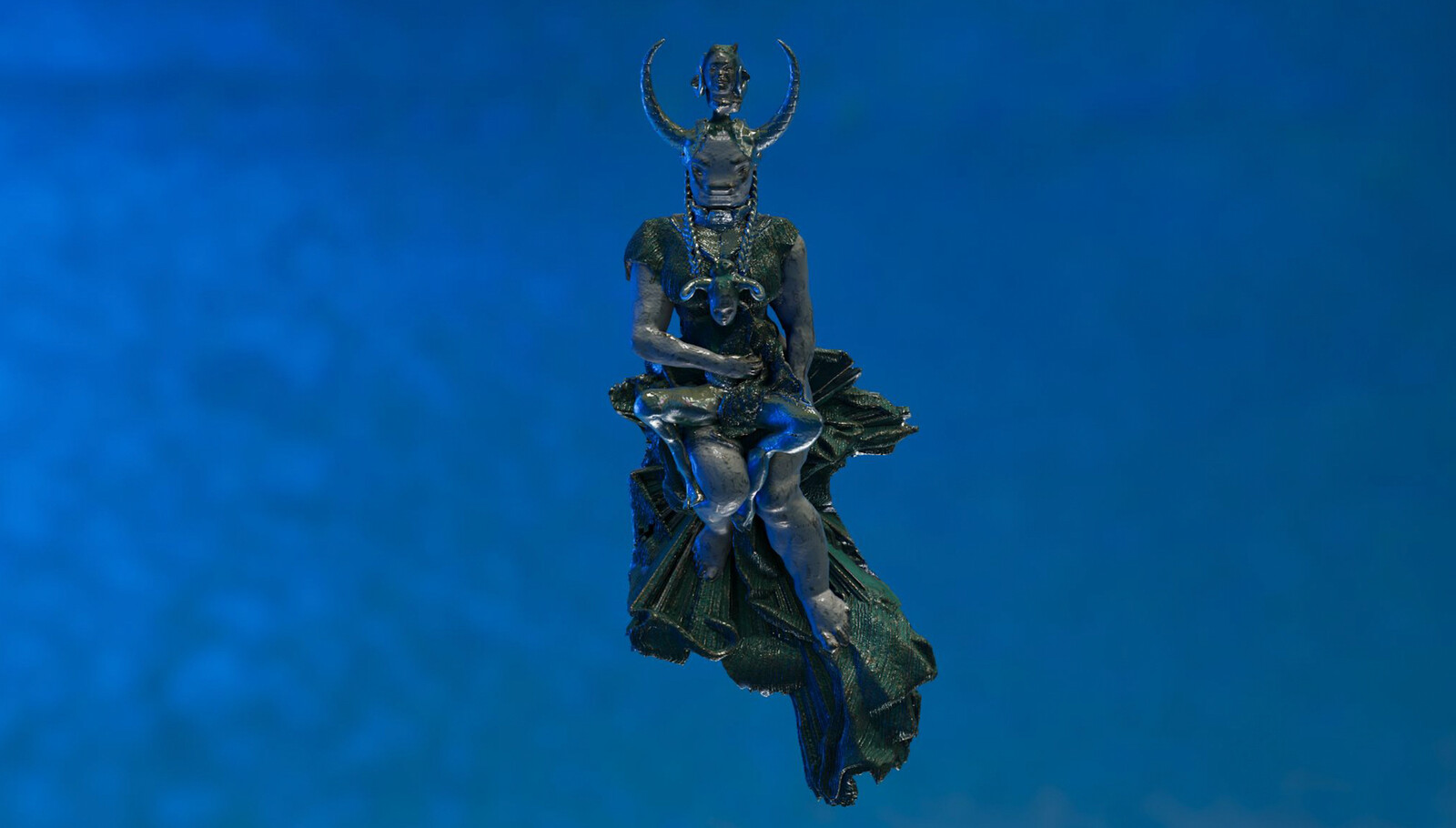Among a spring flush of screen-, code-, and tech-related museum shows, “Refigured” at the Whitney stands out for its concision. The exhibition’s frame may seem vague—the human figure vis-a-vis technology at times verges on a universalized body—but the five works by six artists pulled by in-house curator Christiane Paul from the Whitney’s holdings maintain a fairly tight focus on the physical possibilities of digital bodies, from statues to demigods to talking heads. In Auriea Harvey’s Ox (2020) and Ox v1-dv2 (apotheosis) (2021), for instance, a muscular, berobed humanoid called Ox—which the wall label describes as an avatar for the artist—appears three times over: a pigmented statuette around 20 cm tall, a 3D model presented on a monitor, and an AR version pinned nearby and visible through an iPad tethered to its plinth. The artist’s intentions notwithstanding, Ox exists in digital and psychic “space” as a concept, a potentiality, and these various renderings are all concessions to display in a physical room.
In fact, as each new struggling trillion-dollar metaverse venture demonstrates, even state-of-the-art interfaces between the digital and physical “realms” remain pretty clunky (and the hardware here is not state of the art). The redundancy of Ox means there are backups: when the AR is glitchy, the statue still functions, while the digital scans serve as plans for replacements. (On one visit, the AR model of Ox had been moved across the room from its plinth and scaled up around 1000%.) Morehshin Allahyari’s The Laughing Snake (2019) incorporates both an interactive click-through narrative on a monitor (it worked the first time I went, but not the second) and a physical model of the titular mythic monster suspended in a corner in front of two panes of mirror. The exhibition claims to explore the bleeding edge of figuration, but its real problem is exhibiting: the “materiality” of the digital, insofar as artists explore the gap between the way we want to experience virtual worlds and the extent to which infrastructure and connectivity—the support of computers and monitors, walls and benches, wi-fi and wires—allow it.
QR codes on the labels link out to augmented reality models, for example, bringing the floating dots, disembodied nervous systems, and mechanized cherubs of Rachel Rossin’s “transmedia story” THE MAW OF (2022) into the gallery space, as seen through your smartphone. There’s an iPad tethered to the wall here, too—and the disjointed, anti-narrative layers of imagery also play out on a monitor. Circular LED screens hanging in the room seem to filter the video through infrared, showing abstract orange and red and purple gradients suggesting body heat. Obviously, digital bodies don’t have heat signatures in the same way ours do—although their apparatus radiate. This heat-map motif recurs in the adjacent work, Zach Blas and Jemima Wyman’s im here to learn so :)))))), from 2017, a grating, associative, three-channel documentary about a failed chatbot named Tay, narrated by a smushed-up extrapolation of the “AI”’s Twitter profile pic. (When Microsoft introduced the bot to social media, it quickly started regurgitating racial slurs and white supremacist talking points and was shut down within 24 hours.) A section of the video juxtaposes what looks like infrared military drone footage of people with recordings of first-person shooters, making the unsubtle connection between high tech and mass murder. The installation’s morphing backdrop of the trippy eyes, trilobites, and puppy-dog faces generated by Google’s Deep Dream in its chilling early days feels dated already, but the facts remain: machines amplify human error.
Of course, you can also view the video and AR parts of Rossin’s, Harvey’s, and Allahyari’s work on the Whitney’s Artport website. Underlying the question of display is the anxiety around museums’ continued relevance. Does my digital copy of a sculpture really need to sit on a museum plinth? Why head to the Meatpacking District to see something you can experience, maybe even more fluidly, using the screen through which you already experience the world all day long?
One answer is context. The main benefit of “being there” might be the way certain incidental physical (including electrical) limits embody us as viewers, such as the facts that my iPhone was at 8% battery, my legs were a little sore, it was close to closing time on a Friday, and the three guards were loudly discussing their weekend plans. You could think of the physical components of AR- and online-based work as hedges against power failures; or, vice versa, see sparkling AR overlays as gimmicks on top of traditional artforms. “Refigured” highlights the muddiness of those interfaces—its most complex moments seem like accidents or flaws in the purity of virtual art, but are also, almost gleefully, the result of artists pushing and prodding the constraints of hardware in a museum.
Mother of All Demos III (2022), a chunky sculpture by American Artist—literally a vintage Apple II PC mostly covered in dirt—sits on a table blocked off by museum stanchions (not part of the work). Yes, the stanchions seemed necessary, even provoked, because the gritty case and fat, springy keys appeared so tactile. Of course you want to touch it—and of course you can’t. The work anticipates this tension with a pair of black handprints on the table, a pool of tar on the keyboard. As a cyborg origin story, it’s a bit blunt; as a metaphor for Blackness and the bias of machines, it wants a supplementary text.1 In the context of “Refigured,” the work demonstrates that completely transcending the physical world, even if it were possible, probably isn’t what we want.
There is one. See American Artist, “Black Gooey Universe,” available online: https://static1.squarespace.com/static/59238d36d2b8575d127794a4/t/5a60bdecf9619a7f881b02a0/1516289526013/UNBAG_2_AmericanArtist.pdf.
